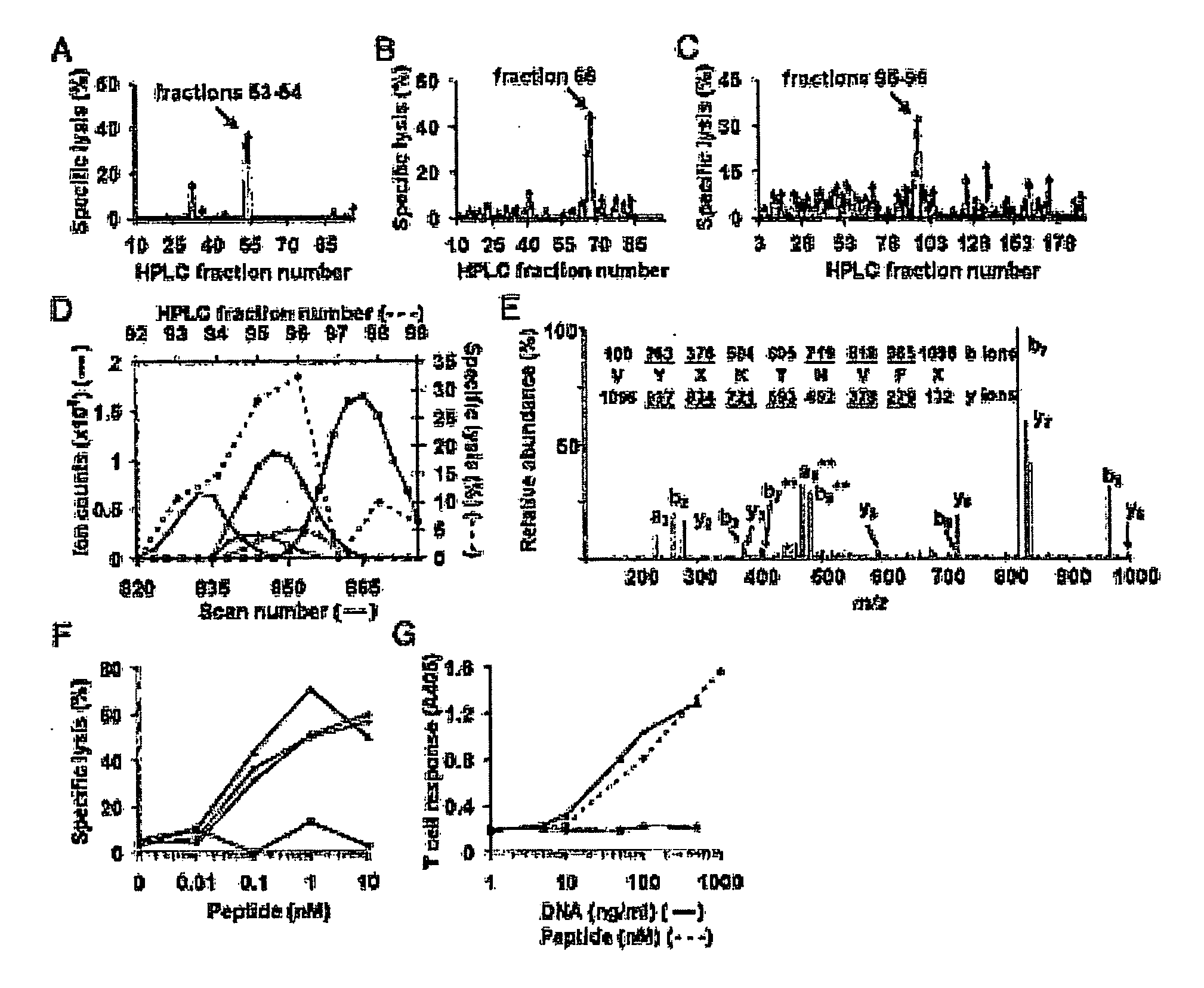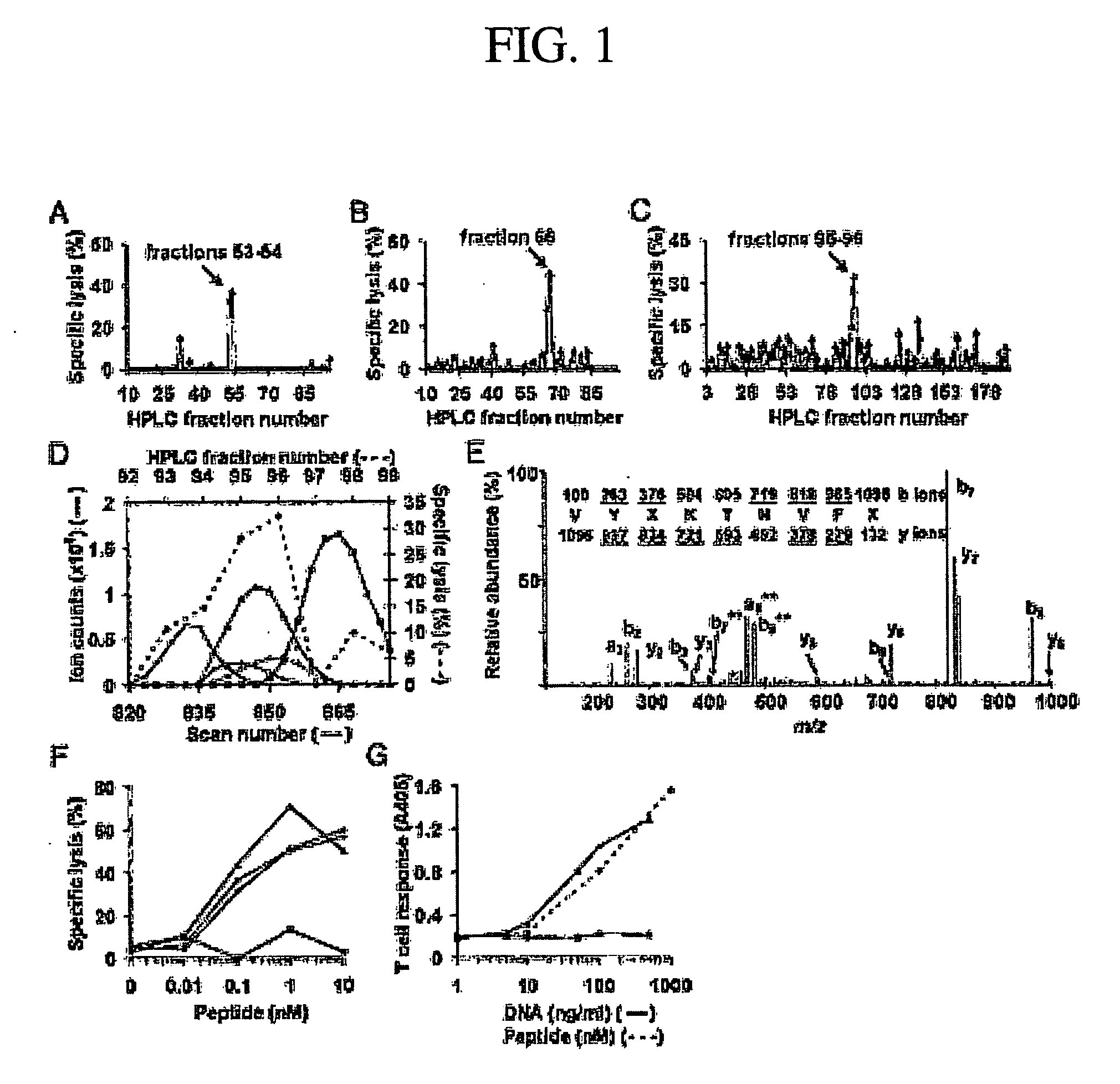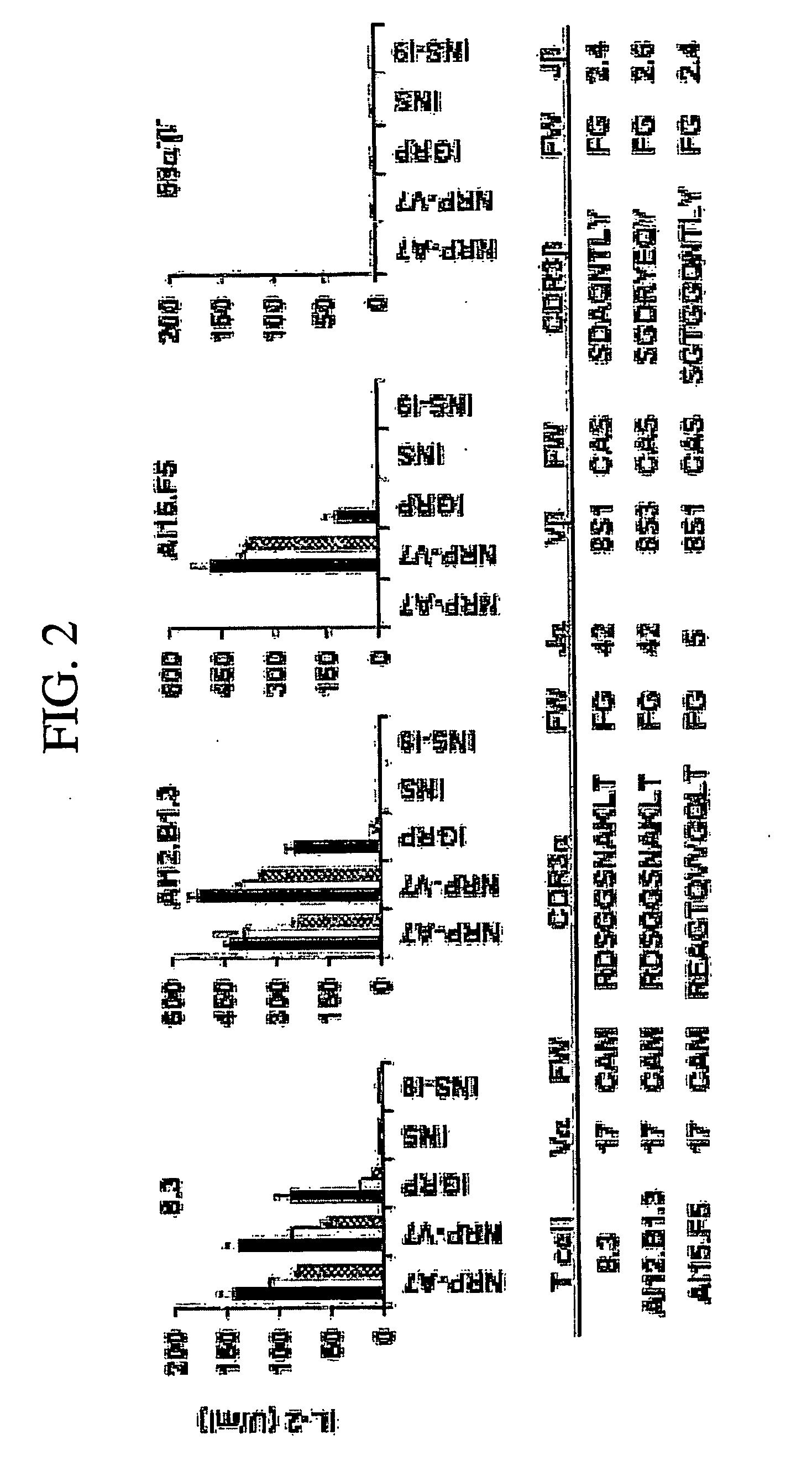Antigens Targeted by Prevalent Pathogennic T Cells in Type 1 Diabetes and Uses Thereof
a type 1 diabetes and pathogenic t cell technology, applied in the field of diabetes diagnosis and treatment, can solve the problems of lack of efficacy of oral bovine type ii collagen and do not sugges
- Summary
- Abstract
- Description
- Claims
- Application Information
AI Technical Summary
Benefits of technology
Problems solved by technology
Method used
Image
Examples
example 1
Identity of the Antigen Targeted by Prevalent Pathogenic T Cells in Diabetes
Example Summary
[0193]CD8+ T cells are essential for destruction of the insulin-producing pancreatic β-cells in autoimmune (type 1) diabetes. Yet their antigenic targets are largely unknown. Here we reveal that the β cell target of a prevalent population of pathogenic CD8+ T cells in NOD mice is islet-specific glucose-6-phosphatase catalytic subunit-related protein (IGRP). The human IGRP gene maps to a diabetes susceptibility locus, indicating that IGRP is also an antigen for pathogenic T cells in human type 1 diabetes and, thus, a new target for diagnostic and therapeutic approaches.
Materials and Methods
[0194]Mice. NOD / Lt mice were maintained by brother-sister mating. 8.3-TCRαβ-transgenic NOD mice, designated 8.3-NOD, have been described (Verdaguer et al., 1997). All mice were maintained under specific pathogen-free conditions and used in accordance with institutional guidelines for animal welfare.
[0195]Clas...
example 2
Protection of NOD Mice from Type 1 Diabetes Using IGRP206-214
[0212]Ten NOD female mice were treated with 100 micrograms of IGRP206-214 peptide (in phosphate-buffered saline) intraperitoneally, starting at 3.5 weeks of age. Forty mice were used as controls. Each control mouse was treated with the TUM peptide (KYQAVTTTL). The mice received one injection of peptide every two weeks for the first three injections, and then one injection every three weeks thereafter. At ˜25 weeks-old, two (20%) of the IGRP206-214 mice developed diabetes, vs. 26 control mice (˜65%). The two mice that have developed diabetes did not have IGRP206-214-reactive T-cells in islets, as determined by T-cell staining with NRP-V7 / Kd tetramers. This was also confirmed by determining whether islet-derived T-cells from these mice produced interferon-γ upon stimulation with IGRP206-214 and NRP-V7 in vitro. There were no significant differences in interferon-γ production vs. cells stimulated with the negative control pe...
example 3
Prevention of Diabetes by Manipulation of Anti-IGRP Autoimmunity: High Efficiency of a Low Affinity Altered Peptide Ligand
PUM
| Property | Measurement | Unit |
|---|---|---|
| concentrations | aaaaa | aaaaa |
| mass | aaaaa | aaaaa |
| mass | aaaaa | aaaaa |
Abstract
Description
Claims
Application Information
 Login to View More
Login to View More - R&D
- Intellectual Property
- Life Sciences
- Materials
- Tech Scout
- Unparalleled Data Quality
- Higher Quality Content
- 60% Fewer Hallucinations
Browse by: Latest US Patents, China's latest patents, Technical Efficacy Thesaurus, Application Domain, Technology Topic, Popular Technical Reports.
© 2025 PatSnap. All rights reserved.Legal|Privacy policy|Modern Slavery Act Transparency Statement|Sitemap|About US| Contact US: help@patsnap.com



